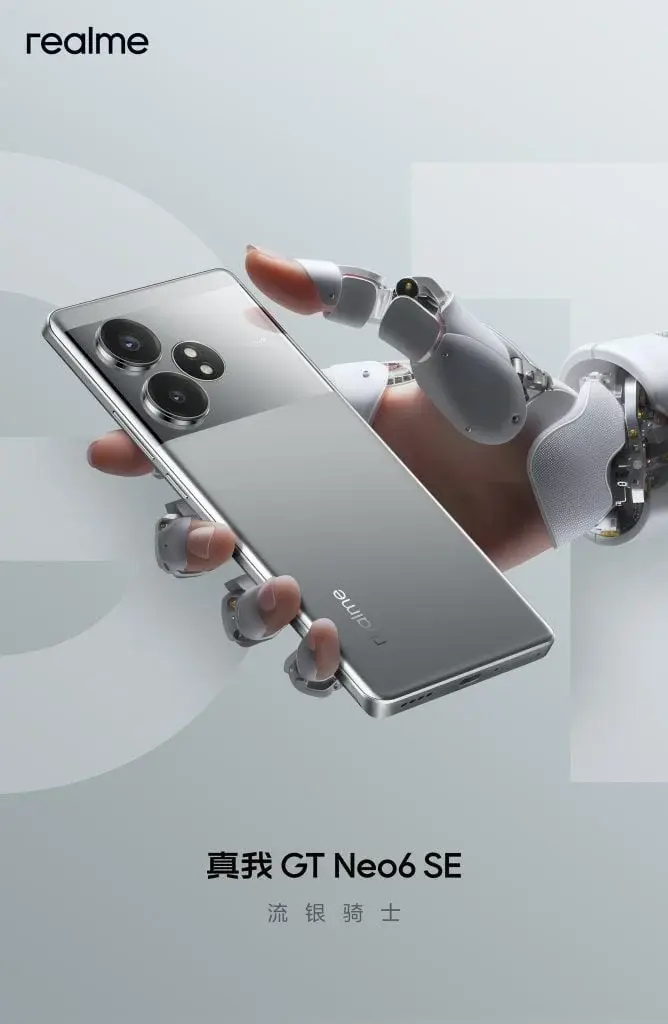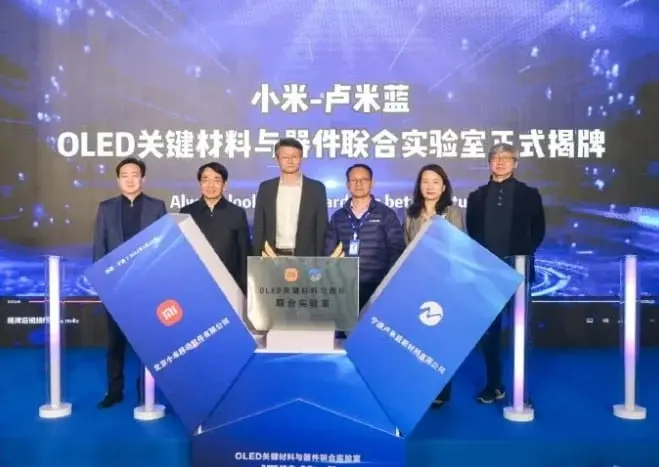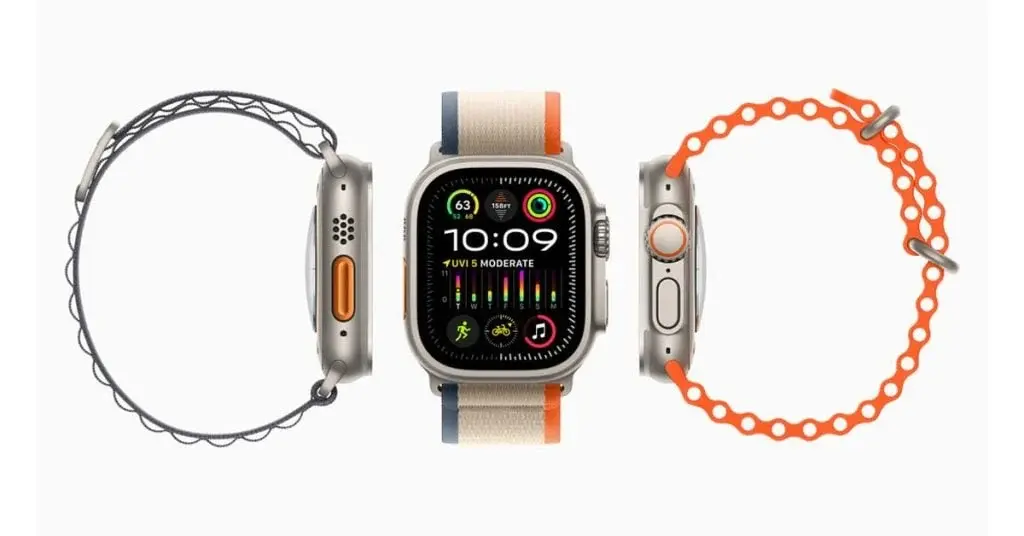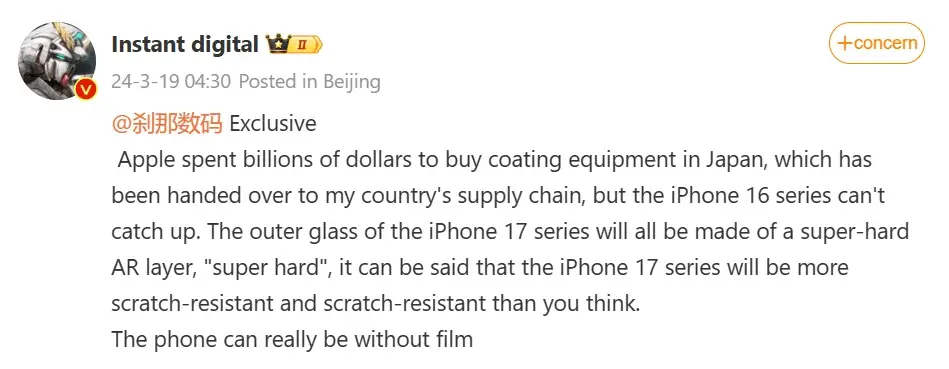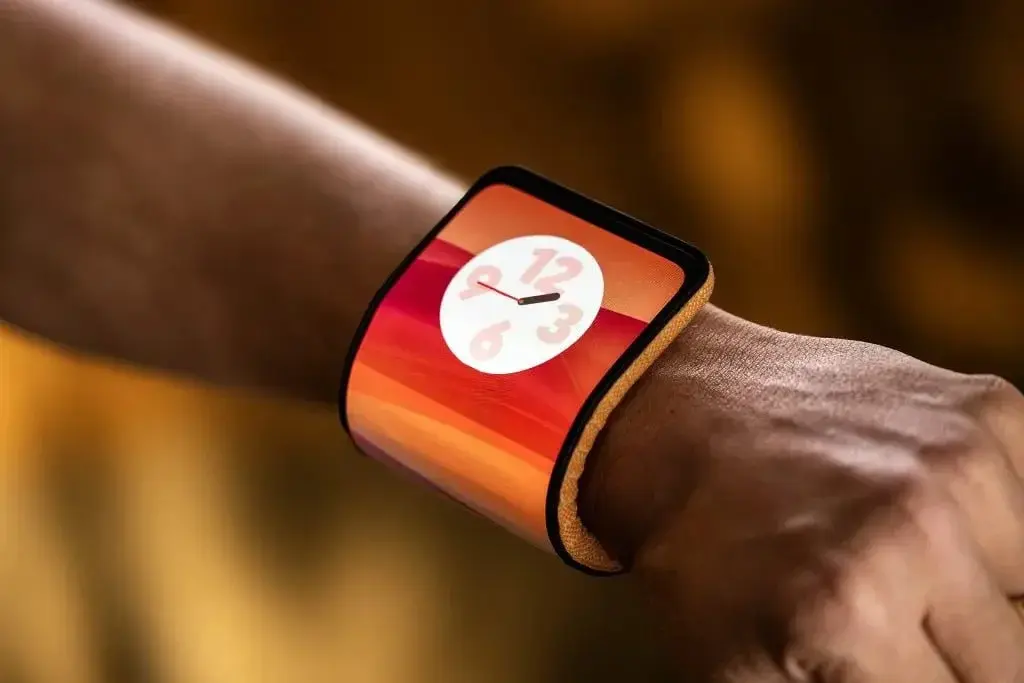Yesterday, Realme unveiled the front design of the Realme GT Neo 6 SE through a poster. Prior to this, a Chinese leaker leaked a render showcasing the green variant of the phone. Today, the brand officially confirmed the rear design of the phone with a new image.
Realme GT Neo 6 SE silver variant revealed
The latest image offers a glimpse at the rear design of the Liquid Silver Knight color variant of the GT Neo 6 SE. The photo highlights a shiny finish on the camera section at the back, contrasting with the matte surface of the rest of the phone. It showcases dual camera rings housing two cameras, accompanied by a dual-LED flash unit.
Realme GT Neo 6 SE specifications
As per sources, the Realme GT Neo 6 SE boasts a 6.78-inch OLED display with a 1.5K resolution. Powered by the Snapdragon 7+ Gen 3 chipset, it can be configured with up to 16 GB of RAM and 1 TB of storage, supported by a 5,500mAh battery with 100W fast charging. The device is rumored to sport a 50-megapixel Sony camera with OIS on the rear, and it is expected to run on Realme UI 5-based Android 14.
The recently released image by Realme displayed the punch-hole screen of the GT Neo 6 SE, featuring slightly curved edges and ultra-thin bezels. Realme claims the GT Neo 6 SE to be equipped with a new 8T LTPO BOE OLED panel supporting up to 6,000 nits peak brightness, a 120Hz refresh rate, and a 2160Hz PWM dimming. Further specifications of the phone are yet to be disclosed, with the launch date still under wraps. Speculations suggest that the Realme GT Neo 6 SE might make its debut in China in the upcoming week and could potentially be rebranded as the Realme GT 6 in markets outside of China.

